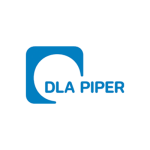Australia’s 2021–22 Federal Budget was delivered by the Australian Treasurer, Josh Frydenberg, on May 11 2021 and includes several important business tax and related initiatives.
Corporate collective investment vehicle
The proposed corporate collective investment vehicle (CCIV) regime which was first proposed in the 2016–17 budget will be implemented as a priority with an anticipated commencement date of July 1 2022.
The CCIV provides flow-through tax treatment and is intended to enhance the international competitiveness of the Australian managed funds industry by allowing fund managers to offer investment products using corporate vehicles which are more familiar ‘than trusts’ to overseas investors.
The new CCIV regime is linked to the Asia region funds passport which will streamline and minimise the regulatory, legal and related approval processes in several Asia Pac countries including Australia, Japan, Korea, New Zealand and Thailand.
Also, the government has expanded the list of exchange of information countries to include an additional six countries that are eligible for concessional (15%) managed investment trust withholding tax.
Patent box regime
The government is introducing a new patent box tax regime which will encourage innovation with respect to developing medical and biotechnology patents, and possibly for the clean energy sector, from July 1 2022.
A concessional effective corporate tax rate of 17% will be available from July 1 2022, which is significantly lower than the regular large company tax rate of 30%. To be eligible a patent must have been applied for after the budget announcement on May 11 2021, it must be granted and it must be Australian-owned.
Intangible assets
Taxpayers will be allowed to self-assess the effective lives of certain intangible assets including patents, registered designs, copyright and in-house software from July 1 2023. This incentive should encourage business investment in these intangibles and related technology and allow businesses to accelerate the tax depreciation related thereto.
Temporary levy on offshore petroleum production
A new temporary levy will be imposed on offshore petroleum production to assist in recovering the costs of decommissioning the Laminaria-Corallina Oilfields and associated infrastructure.
Importantly, the temporary full expensing (instant asset write-off) and the temporary loss carry back measures were extended for another year.
Various sundry amendments/improvements were made to the employee share scheme rules, individual tax residency test, digital games tax offset, small brewers and distillers excise refund scheme, and superannuation.
It was pleasing to witness a greater focus on business tax incentives as well as further spending and other economic stimulus initiatives.
NSW Supreme Court
Also, in an important and broadly applicable decision (SPIC Pacific Hydro Pty Ltd v. Chief Commissioner of State Revenue [2021] NSWC 395), the NSW Supreme Court held that landholder duty was payable in NSW on the acquisition of a group that operated a windfarm on leased land.
In particular, the Hon Justice Anthony Payne decided that the wind turbine generators and meteorological or monitoring masts on the windfarm, along with related infrastructure, were ‘tenant’s fixtures’ and thus constituted a legal interest in land, on which landholder duty was payable.
The concept of ‘tenant’s fixtures’ depends, among other things, on the intention and degree of annexation of the relevant plant and equipment, and also has broader potential income tax consequences, in addition to stamp duty. The principles discussed in this case also have broader application to other plant and equipment and related infrastructure assets.
Jock McCormack
Partner, DLA Piper Australia
E: jock.mccormack@dlapiper.com












